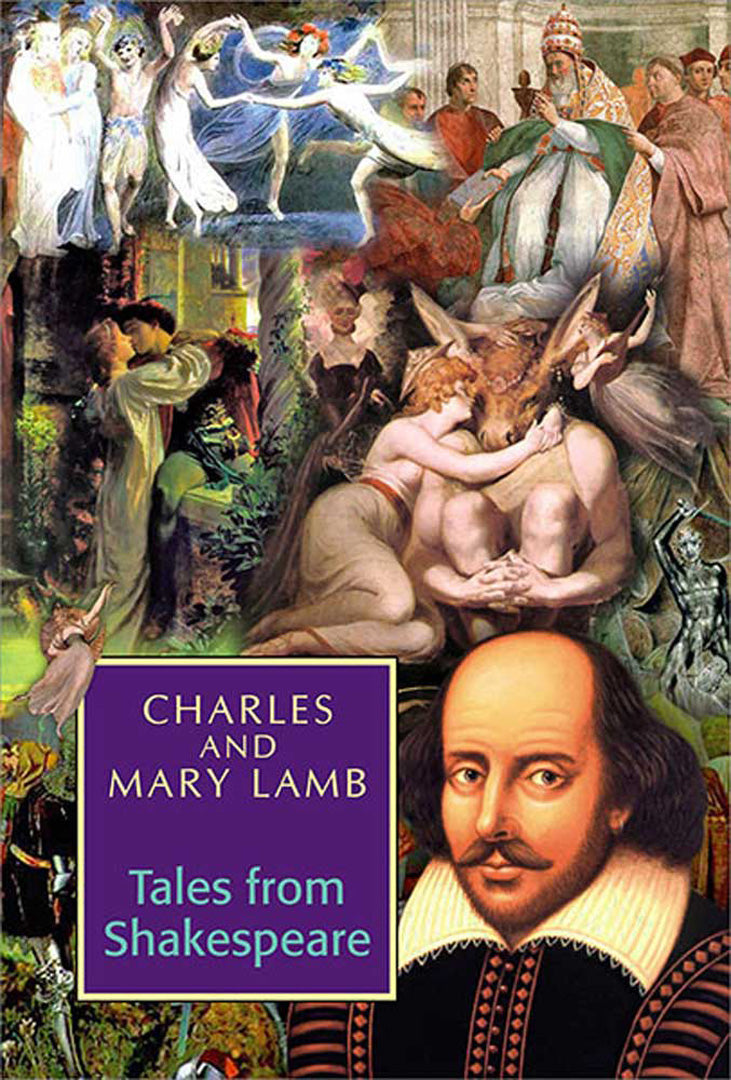Tales From Shakespeare
Tales From Shakespeare
Charles and Mary Lamb
Couldn't load pickup availability
Share

More Information
- ISBN13:
- Publisher: Atlantic Publishers & Distributors (P) Ltd
- Publisher Imprint: Peacock Books
- Publication Date:
- Pages: 290
- Binding:
- Item Weight:
- Original Price:
About The Book
An enthralling retelling of Shakespeare’s twenty masterpieces, Tales from Shakespeare is a real feast of simple words flavoured with those tasty tidbits of Shakespearean language which appeared to Charles & Mary Lamb comprehensible. Conveying Shakespeare’s wit, wisdom and humanity and retaining the grandeur and depth of the source texts, the powerful themes and unforgettable characterisation of his plays have been so skilfully distilled into elegant narratives that they can be enjoyed as classic tales in their own right.
What could be better introduction to Shakespeare’s plays than the delightful prose adaptations of Lamb!
About The Author
Charles Lamb (1775-1834) and his elder sister Mary Lamb (1764-1847) were the children of a confidential clerk to one of the lawyers in the Inner Temple in London. Charles grew up to join the charitable school of Christ’s Hospital on a scholarship, where he met Coleridge as a senior student and a lifelong friendship was struck. However, Charles had to start work rather too early. He began as a clerk to a city merchant in 1789. In 1791 he joined the South Sea House, from where he moved in to East India Company and continued there for long thirty-three years as a clerk, “a prisoner to the desk...almost grown to wood,” as he described himself. There was a streak of insanity in the family, and though Charles had only one brief stint in a mental hospital in 1795, all his life he lived under the shadow of a fear. Mary’s case was more serious; under a spell of madness she had stabbed both her parents and had to stay one year in a lunatic asylum before her brother took charge of her, which he did not relinquish till his death. Mary too appreciated the sympathy and kindness of the younger brother who remained a bachelor for her sake. Mary too did not marry.
Charles was a warm hearted, amiable, and much loved person, whose homes—the Lambs had to change their residence continually because of the gossip that chased them regarding Mary’s past—were the meeting places for Coleridge, Wordsworth, Leigh Hunt, Southey and other literary figures of the time.
Though unsuccessful as dramatist or poet, Charles Lamb made his mark with his critical exposition of English dramatists of an earlier era, Specimens of English Dramatic Poets Who Lived about the Time of Shakespeare (1808). In 1820 Lamb started writing the unforgettable Essays of Elia for the London Magazine, which ensured his place for posterity as a personal essayist.
Charles and Mary jointly wrote three books for children, among which the most well-known is Tales from Shakespeare (1807).
Tales from Shakespeare, by Charles Lamb and Mary Lamb, retold twenty of Shakespeare’s best-known tragedies and comedies, which has since the date of its first publication, been a delight for both the children and adults all over the world. While offering in charming, clear prose a simplified version of the great tales of Shakespeare, the authors have yet remained sensitive to the grandeur and depth of the source texts.
Originally “meant to be submitted to the young reader as an introduction to the study of Shakespeare,” Tales from Shakespeare can be enjoyed both as fine introduction to the great plays as well as beautiful stories in their own right.
Though the writers were quite apologetic about “these small and valueless coins” from “the rich treasures,” or these “faint and imperfect stamps of Shakespeare’s matchless image,” the book has a historical value in the sense that this was the first book to retell in a nutshell the grand stories of Shakespeare’s plays, and thus raise the common readers’ awareness of Shakespeare in the eighteenth century and afterwards.
The book is an instance of a unique success in the difficult task of filtering an adult literature through the sieve of a sensitive mind to make it fit for the children’s fiesta, and yet retaining much of the flavour of the original. The rich feast shows that the authors did not underestimate their young readers either. The plays are so selected as to give them a taste of the best of the great master.
In rewriting the plays in prose paraphrase the Lambs retained some of the original speeches in order to give the reader some idea of the ‘real’ Shakespeare.

